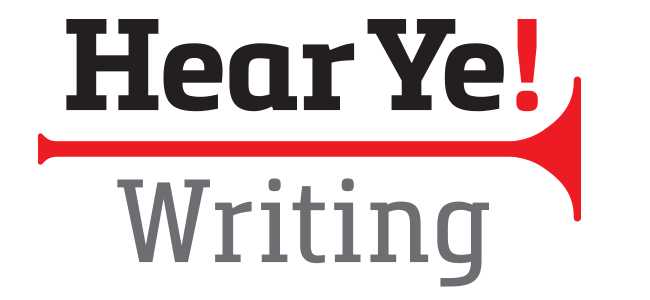Do You Make These 3 Onboarding Mistakes with Freelancers?

5 Tips to Getting Content You Love from Freelancers
February 12, 2018
5 Ways a Great Freelancer Can Boost Your Career
March 12, 2018You’ve found the perfect freelance writer, and you’re ready to bring him onboard. The sooner you set him up in your system, the sooner you’ll get that content you need.
But then you discover roadblocks that thwart the onboarding progress, and they just happen to be within your own company. How did this happen?
Simple. You rely on other internal departments, such as procurement, HR and legal, to complete your task.
The trick is to iron out these processes before you reach out to a freelancer.
So if you’re making the following onboarding mistakes, then they’re derailing your goal — getting content into your hot little hands.
1. You don’t have an onboarding process – at all
Some companies are well-oiled machines with established processes in place. Others take a more relaxed approach. In either case, you need to know what that the process is before you start casting about for a freelancer to help you with a project.
Perhaps you fit one of these scenarios.
Maybe you’ve left a big company and joined a startup as a content manager. Before, a procurement department managed the vendor process. Now you’re realizing that operations at your new home are less structured.
That could work in your favor, because smaller companies have fewer layers and can turn on a dime.
Or you’re new at freelance hiring, you just got promoted to a content management position, or you’re filling in for someone on family leave.
Whatever your situation, you need to figure out what pieces must be in place to quickly bring on a freelancer.
Reach out to HR, legal, accounts payable and other departments that you depend on to onboard a freelancer. Establish good relationships with the folks who will support your process.
Then, when you need to call in a favor, they’ll be there for you.
2. You don’t have a contract on hand or you’ve never read it
Most seasoned freelance writers ask for a contract and a statement of work before they start on a project.
If you don’t have either of these on hand, ask your legal department for a master service agreement (MSA) and a statement of work to provide the freelancer.
Depending on the size of your company, the MSA may be a generic contract given to all types of vendors. (Mashable has a good article on legal issues when hiring freelancers.)
Whether you have an MSA that’s specific to freelance writers or not, read it ahead of time and know what it says.
A savvy freelance writer will read the contract and might ask to negotiate certain terms, such as when to invoice, how soon to collect payment, or what copyrights are acceptable, e.g., first rights, etc.
I’ve read contracts that wanted me to report my hours on a daily basis. Such a requirement applies to employees, not independent contractors. I’ve also seen contracts that indicate the company would pay me 45 days after receiving an invoice or only upon publication.
These are terms the freelancer might have questions about, and those shouldn’t take you by surprise.
Also, the answers to any of the freelancer’s questions regarding contracts should come directly from you, because there’s another aspect to this issue of negotiating.
You’re establishing a relationship with the freelancer. Placing yourself in the role of facilitator between the freelancer and your company’s internal departments shows that you care about the outcome.
So the more you know how contracts work and what terms are negotiable, the fewer stumbling blocks you’ll encounter.
And the faster you can onboard the freelancer and get the content you need.
3. You don’t know how your company pays freelancers
This mistake follows closely on the heels of not knowing what’s in your company’s vendor contracts. Here’s why:
Scenario #1: Imagine you want to hire a freelancer for a white paper, and the freelancer wants a 50% deposit.
Yet your company has just started using Contently, where payments take place only after the freelancer has completed the project.
How do you work around that little glitch? Get the freelancer to drop that requirement? Or work this project outside of the content management system?
Scenario #2: You want to hire a freelancer for a series of case studies and the freelancer requests a down payment, but your company doesn’t use PayPal or offer other easy methods of quick payment.
It’s paper checks only, and those are issued only on certain days of the month.
Unfortunately, you need these case studies for a conference that’s coming up, and now you have to wait two weeks before the freelancer is ready to start working with you.
The mistake you’ve made is not knowing how your company pays freelancers until the freelancer asks to be paid. And that puts you in a pickle.
Do you write the case studies yourself when you’ve got a thousand other things on your plate? Do you ask the freelancer to forego the down payment on a large project?
The best way to avoid this situation in the first place is to come to the table prepared. Know the payment process ahead of time.
If it’s slow and clunky, plan your assignments accordingly. You’ll know that last-minute projects for freelancers might be out of the question.
Need more advice? Read this blog post by The Balance for additional tips on paying freelancers.
Think like a Boy Scout
There are plenty of other onerous onboarding issues, but it doesn’t have to be that way. Just follow the Boy Scout motto and be prepared.
Do your homework, make friends with your company’s admins and internal departments, and get your process set up.
That way, when it comes times to bringing that freelancer onboard, you’ll look like a pro.


